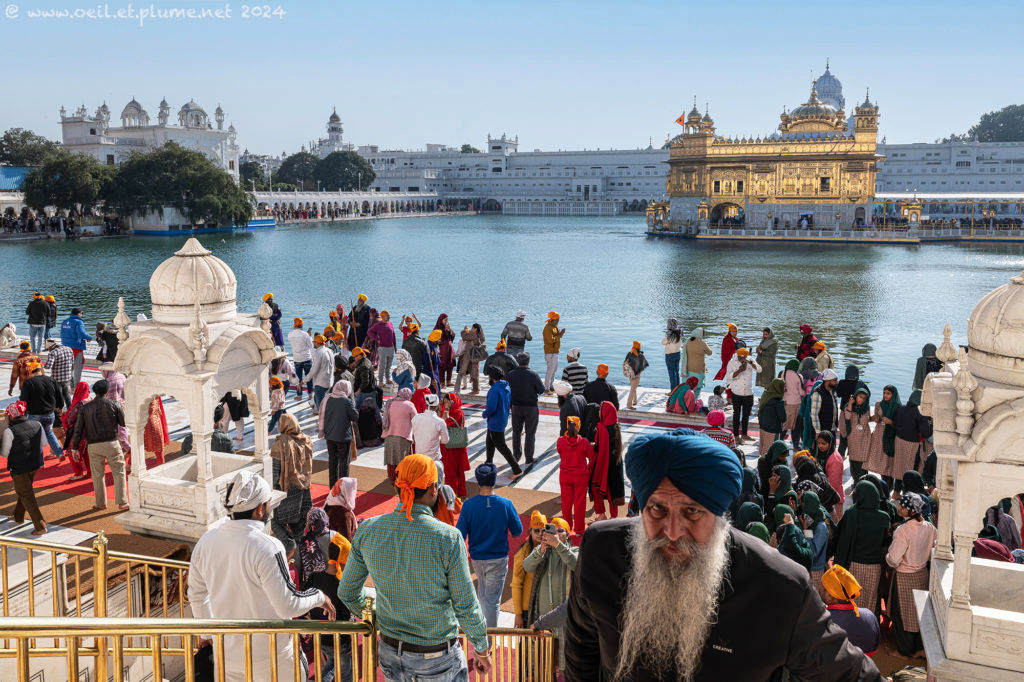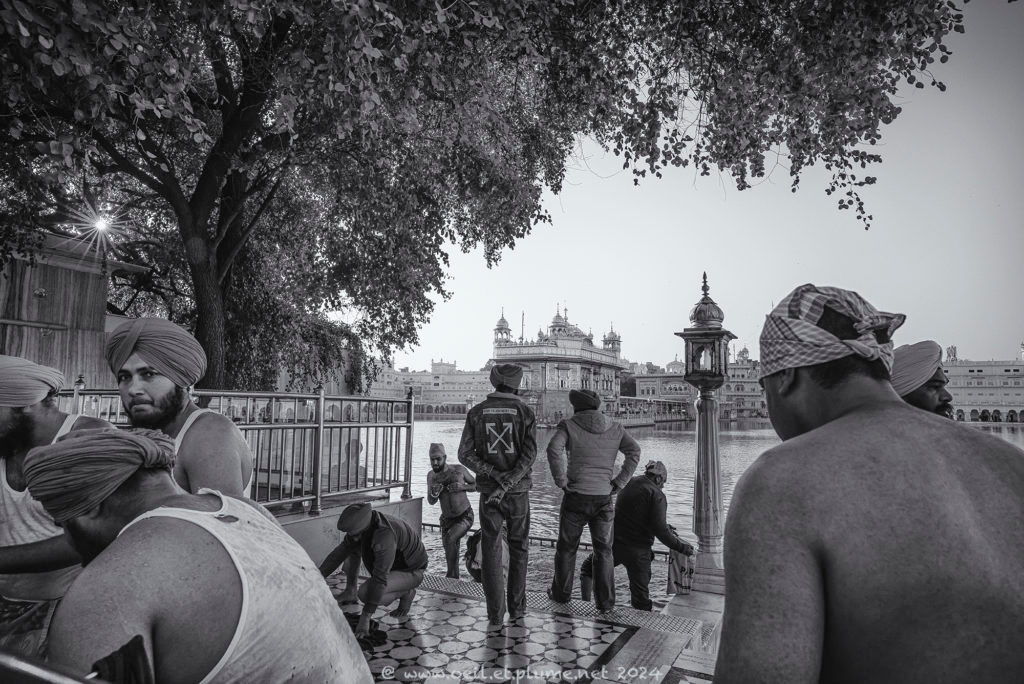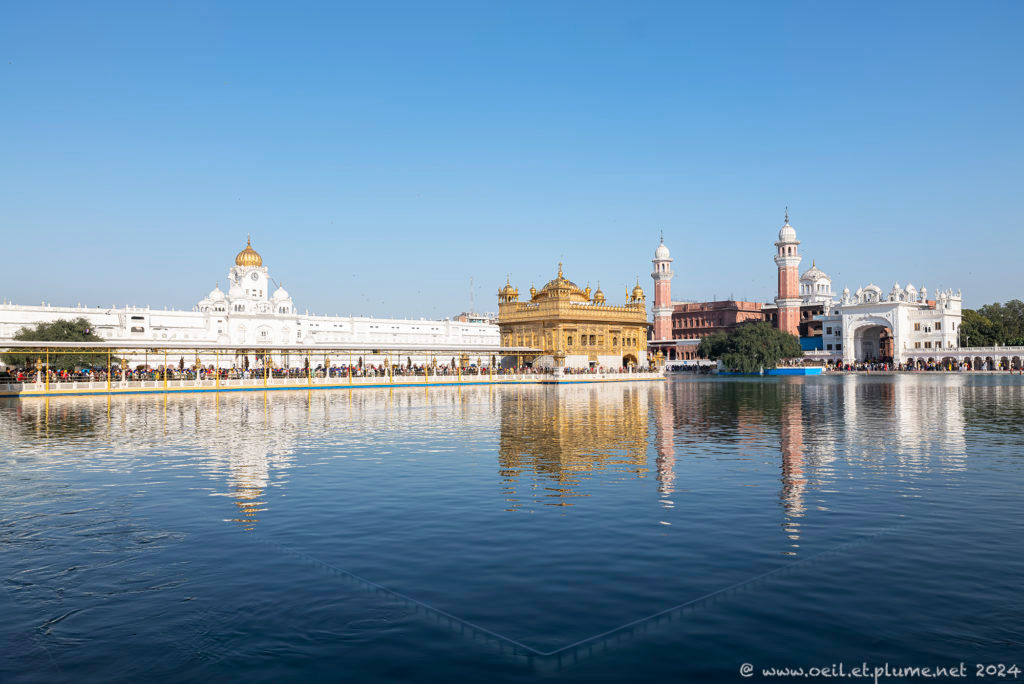“I have visited all the places; none resembles this one.” The words from a Sikh Guru describing his enchantment upon visiting the Golden Temple of Amritsar could have been mine.
Following my 2006 visit, I was longing for a second experience in the most revered sanctuary of sikhism. My wish has been fulfilled recently.
I reach the Golden Temple’s precinct at dawn. Once inside, I stand immobile for long minutes, mouth agape: an enclave of intense spirituality, serenity, peace, and happiness.
The city of Amritsar owes its name to the sacred pool, which means “Pool of Nectar,” referring to a divine drink that brings euphoria and thus spiritual enlightenment. The origin of the sacred lake teems with legends and miracles. Violent episodes have stained the history of this holy place. As a good optimistic Cartesian, I intend to leave the legends to the storytellers, the miracles to the enlightened, and the tragedies to the annals of history. But can one still be rational in the Golden Temple?
About 2,500 years ago, the Buddha is said to have stayed and meditated near the current sanctuary, on the banks of a small natural lake drowned in the jungle. He was imitated in the 15th century by Guru Nanak, the founder of Sikhism.The successors of Guru Nanak transformed the site into a major pilgrimage destination.
The Sikh sanctuary exudes an indescribable impression of religious fervour. From dawn until after dusk, priests sheltered in the Temple chant sacred verses called ardas, supported by a delicate and enchanting music. Broadcast all around the sacred pool, the monotonous sacred melodies feed the ambient serenity. It feels like floating on a gentle magic carpet supported by the sweet melody of instruments and voices, driven by the fervour of priests and devotees.
Pilgrims walk clock-wise around the pool, stopping for a moment or an eternity for their meditations, ablutions, discussions or portrait pictures. Males bath in the open pool, while females do so in a protected part of the lake.
Pilgrims hum sacred chants or engage in quiet conversations. Not a raised voice. One of them whispers to me: “Christian?” At my cautious nod, he breaks into a broad smile punctuated with a luminous “Alleluia!”
Devotees patiently tread the narrow footbridge leading to the Temple. It can take hours to reach the sacred building.
The Temple is covered with coarse gold plates. Marble abounds, inlaid with a constellation of precious stones. Inside, a handful of priests sit on carpets. Their voices take turns to venerate the verses of the Adi Granth, the Sikh holy book, without respite. Too sacred to endure gazes, the Adi Granth is sheltered under a pink canopy. Every evening, it is ceremoniously returned to its nightly quarters before being brought back to the Temple at dawn.
Sikh spirituality is nourished by tolerance, syncretism and generosity. Visitors of all faiths can obtain a portion of consecrated food served in various locations, including in the Temple itself.
Sikhism is known for its tradition of seva – a voluntary service performed for others without any expectations or reciprocity. Around the pool, dormitories and refectories welcome any visitor for free, regardless of their religion, social status, politics, or race. However, anyone who wishes a meal must first cook or serve others. The Golden Temple is also a place to rest by daytime and even to be accommodated at night.
Out of the numerous trees that originally bordered the Golden Temple complex remain three jujube trees. I spent much time around one of them, called the Ber Baba Buddha. An important stop-over for Sikh pilgrims, the venerable tree is so old and large that it nowadays requires a metallic support belt. Ber Baba Buddha must have met with so many people and witnessed so many events that it calls for my respect and my admiration.
The Golden Temple materializes the political ambition of Sikhism: to transcend the caste system, to synthesize Hindu and Muslim, even Buddhist religions, to express the essence of the Indian soul.
Nowadays, the Golden Temple is unquestionably more crowded than during my first visit in 2006. It hosts up to 150,000 visitors daily. The massive influx of visitors has eroded a portion of the serenity that I felt so strongly and happily in my first visit. Never mind, the place remain absolutely special for any visitor.
“I have visited all the places; none resembles this one.” My visual, auditive and emotional memories of the most revered sanctuary of sikhism will travel with me forever.
Cheers,





























